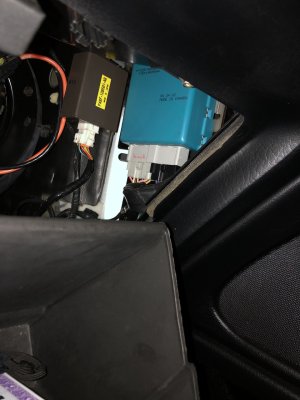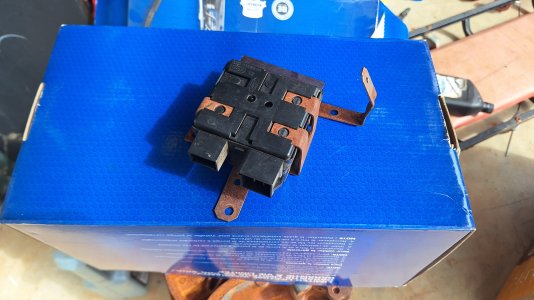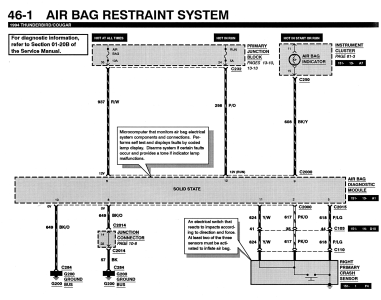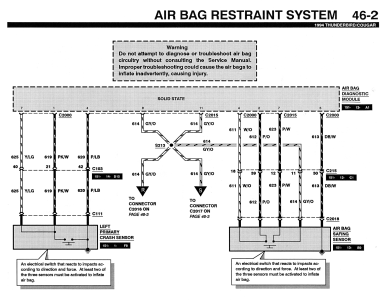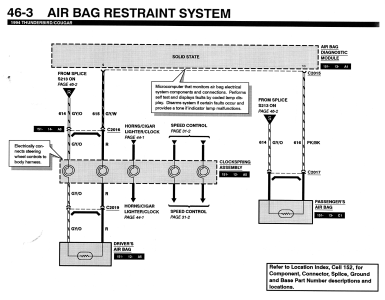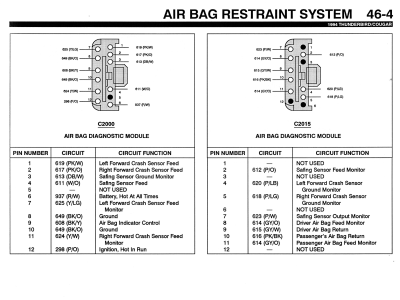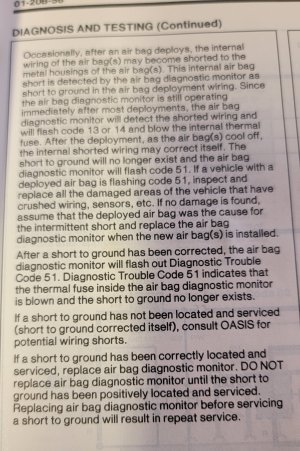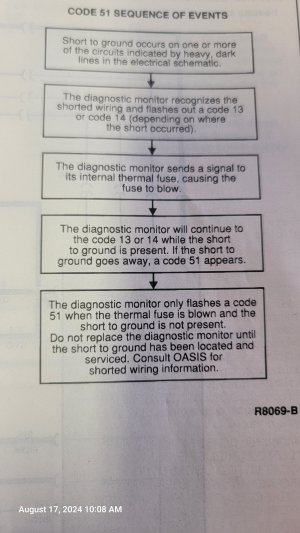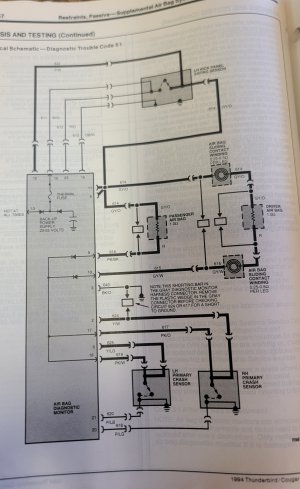NOTE:
The diagnostic monitor contains an internal thermal fuse that is not serviceable. The thermal fuse is controlled by a computer inside the diagnostic monitor. The computer will blow the thermal fuse whenever a short on the deployment circuits occurs. The thermal fuse does not blow because of excessive current flowing through it. DO NOT attempt to jumper out the thermal fuse with a circuit breaker or any other type of fuse.
NOTE:
DO NOT install a new diagnostic monitor until the short has been located and corrected. If a short to ground has not been located and corrected, then the short to ground is intermittent and IS NOT PRESENT AT THIS TIME. Installing a new diagnostic monitor with an intermittent short in the system will result in blown diagnostic monitors and repeat repairs.
The diagnostic monitor measures the voltages at the diagnostic monitor connector pins. When certain air bag deployment wires are shorted to ground (heavy lines illustrated in the schematic below), the system may become susceptible to unwanted deployment of the air bag(s). The diagnostic monitor senses a short to ground on any of these circuits and helps prevent unwanted air bag deployant by blowing the diagnostic monitor thermal fuse. Blowing this fuse removes all power (battery and back-up power) from the air bag deployment circuits. While the short to ground exists, the monitor will flash fault code 13. If the short to ground is intermittent and temporarily corrects itself, the diagnostic monitor will flash code 51.
NOTE:
If the short to ground returns, the high priority code 13 will flash instead of 51.
If the air bag lamp is flashing code 51 and a short to ground has not been serviced, this means that an intermittent short to ground exists in the air bag system. The diagnostic monitor should be replaced only after repairs to the intermittent short have been completed.

